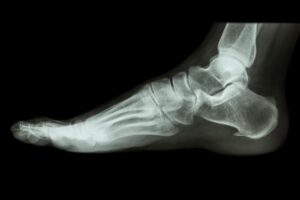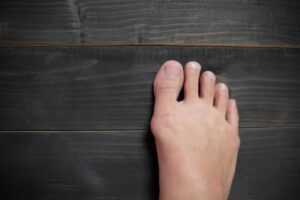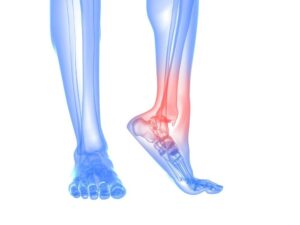Is Surgery My Best Option For Treating Bunions?

You have a bunion and it isn’t pretty, but if your bunion is small enough, or doesn’t hurt, you may be tempted to ignore it. Unfortunately, bunions are a progressive foot deformity that only worsens if not treated.
At Arizona Foot Health, PC, we know that treating bunions sooner rather than later helps your foot function better and avoids surgery. But if your bunion causes pain or is compromising the function of your foot and other toes, surgery may be the best option. Dr. Ryan Golub, team podiatrist to the Phoenix Suns and founder of Arizona Foot Health, helps you manage your bunions at every stage.
Why you have bunions
Bunions are often inherited or may be a result of arthritis or stresses on your foot. You can also cause bunions — or worsen them — by wearing shoes that are too tight or pointed.
A bunion begins when your big toe shifts out of alignment and moves toward your second toe. The base joint of the big toe — known as the metatarsophalangeal joint (MTP) — is pushed outward, causing a bony protrusion at the inner portion of your foot. If your shoe rubs against the protrusion, it can grow larger and sometimes becomes inflamed and painful.
Without correction, your big toe may start to overlap or underlap your second toe. At this stage, you may have difficulty finding shoes that fit and also develop problems with walking or running. The friction from a bunion can create corns and calluses between your toes and increases your risk for developing hammertoes.
The DIY approach
If you have small bunions that aren’t yet causing symptoms, we first recommend switching footwear so that your toes have room in the toe box. Also avoid wearing high heels or any other kind of footwear that puts pressure on your toes.
When you notice pain or friction from rubbing, you can try over-the-counter bunion pads to cushion your toe. You can also ice your bunion for no more than 20 minutes at a time and use over-the-counter painkillers to control discomfort. If these measures don’t improve your bunions, call us for an appointment.
Straightening the big toe
Because a bunion isn’t just a bump, but the sign that your big toe isn’t aligned correctly, Dr. Golub may recommend custom-designed orthotics that shift the position of your toes. The orthotics correct your gait so you can walk and run comfortably again.
Unlike store-bought shoe inserts, custom-designed orthotics are molded to fit your feet perfectly. We take impressions of your feet, which are then sent to a laboratory that creates orthotics based on Dr. Golub’s recommendations to correct your alignment. You can get orthotics for all types of shoes, including athletic shoes.
A permanent fix
If your bunion is too large or painful to respond to orthotics, Dr. Golub recommends bunion surgery. For a bunionectomy, which he performs under local anesthetic at the Arizona Foot Health offices, Dr. Golub cuts any ligaments that may be pulling your toe out of alignment and then repositions it.
In some cases, he may need to perform an osteotomy to reduce the size of your bunion. He shaves away excess bone from your MTP joint and repositions your toe with wires, plates, and screws. Most women and men can walk directly after their surgery with the aid of a surgical shoe.
Don’t guess about your bunions or wait until they cause pain or difficulty walking. Call us at Arizona Foot Health for a bunion evaluation.
You Might Also Enjoy...
The Achilles Heel
Given Arizona’s climate, patients are able to remain active year round. It’s why we all chose to live here. But…
Alleviating Back Pain and Other Benefits of Custom Orthotics You Didn’t Know About
Would you ever imagine that custom foot orthotics could improve your quality of life? That’s what many people say after…
9 Helpful Tips to Prepare Your Home Before Bunion Surgery
When moderate interventions, such as wearing wider shoes or using pads in your shoes, fail to ease your bunion pain…
When Should You Go to the Doctor for an Ingrown Toenail?
In most cases, you can nurse an ingrown toenail at home with over-the-counter pain medication, topical antibiotic creams, and soaking…
6 Home Exercises to Keep Your Ankles Strong
Ankles that feel wobbly and weak are vulnerable to injury. If you play sports, run, jump, or just walk often,…
Is Surgery My Best Option For Treating Bunions?
You have a bunion and it isn’t pretty, but if your bunion is small enough, or doesn’t hurt, you may…






